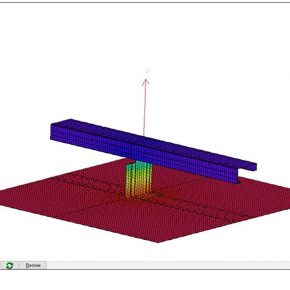
GUEST ARTICLE: Water Pollution on Construction Sites – Common Sources and Treatment Methods
Richard. D. Coulton, General Manager – Construction at Siltbuster, discusses the top causes of water pollution on construction sites, the impact it has on the natural environment and the most effective treatment options.
In 2018 the Environment Agency released its ‘Temporary Dewatering of Excavations to Surface Water’ regulatory position statement (RPS), that specified how all construction companies must have a Bespoke Permit to discharge anything other than clean water off site into the surrounding environment. This came in the context of a Leeds-based house building company being fined £120,000 for illegally polluting a watercourse.
It therefore makes sense for construction firms to understand more about the most common sources of onsite water pollution – silty waters, oil and concrete wash water – and how to treat them.
Silty Water
The most common source of pollution on construction sites is suspended solids (silt-laden waters). In fact, silty waters make up roughly 40 percent of the construction industry’s water pollution. That’s because they can arise quite easily.
When a construction site takes away the topsoil, it strips the land’s strongest defence against erosion, vegetation. The remaining surface has no protection from rainfall and run-off, so silty water enters drains and watercourses, potentially blocking the gills of fish and smothering aquatic plants by starving them of light and oxygen.
There are some practical solutions that can minimise silt pollution, however, if silty water does arise it will need dealing with – and with tankering costs being expensive, that means mastering on-site treatment techniques.
The construction of settlement lagoons will help manage suspended solids, but they take up a lot of space on site. A more compact solution is to use lamella clarifiers which are up to 20 times more space efficient than traditional baffle tanks or lagoons. For slow settling solids, a chemical dosing stage may be required to aggregate the particles and increase settling rates.
Hydrocarbons (Oils)
Hydrocarbons are commonly encountered on remediation projects in the form of petroleum-based substances such as petrol, diesel, kerosene and oils. Sources can include historical spillages that have been absorbed into the land, unmapped pipe networks still full of product or even new spillages from refuelling of plant or burst hoses.
Again, there are some practical measures construction firms can take to minimise this pollution, such as providing oil spill kits and refuelling vehicles in designated areas, however, in certain cases, such as site remediation, oil contaminated water may be hard to avoid. In such cases an oil water separator will be needed to remove the contamination, either by flotation or settlement.
High pH Water
The pH of concrete wash water is 12 to 13 – the same as oven cleaner – making it highly damaging when discharged. Despite these risks it is still misunderstood by contractors, with many allowing concrete wagons to wash out into leaky waste skips.
When it comes to dealing with such water, dilution isn’t practical or cost-effective; it takes 10,000 litres of water to get 1 litre of concrete wash water with a pH of 12 to an acceptable pH of 8.
Some suggest using mineral acids like sulphuric or hydrochloric to adjust the pH. However, these are dangerous to handle, can easily overshoot the target resulting in equally polluting acidic water and they also create ‘secondary pollutants’.
As a result, Carbon Dioxide is by far the best neutralising agent. It’s virtually impossible to acidify water using CO2, it has no hazardous by-products, is easy to store and is the most cost-effective.
Summary
There are some simple steps to minimising the risk of creating onsite water problems and dealing with them should they arise. The key is to plan – be pre-emptive rather than reactive; anticipate the problems, prepare for the unexpected and know what the solutions are.
Latest news

26th July 2024
Enfield Speciality Doors completes world-class project for Atlas Copco HQ
A rundown office and warehouse building completely transformed into a modern headquarters for Atlas Copco has been fitted with more than 120 internal fire doors from Enfield Speciality Doors.
Posted in Access Control & Door Entry Systems, Articles, Building Industry News, Building Products & Structures, Building Systems, Case Studies, Doors, Interior Design & Construction, Interiors, Posts, Restoration & Refurbishment, Retrofit & Renovation, Security and Fire Protection, Sustainability & Energy Efficiency, Timber Buildings and Timber Products, Wooden products
26th July 2024
Abloy UK launches new white paper
Abloy UK, a leading provider of security and access control solutions, has launched a new white paper.
Posted in Access Control & Door Entry Systems, Architectural Ironmongery, Articles, Building Industry News, Building Products & Structures, Building Services, Doors, Facility Management & Building Services, Health & Safety, Information Technology, Innovations & New Products, Publications, Research & Materials Testing, Security and Fire Protection
26th July 2024
MCRMA Member Profile: David Roy, Director of Roofconsult
David Roy of MCRMA member company Roofconsult has more than 50 years’ experience to draw upon working in the building envelope sector and a unique perspective on how it has changed in that time.
Posted in Articles, BIM, Infrastructure & CAD Software, Building Associations & Institutes, Building Industry News, Building Products & Structures, Building Services, Building Systems, Cladding, Information Technology, Restoration & Refurbishment, Retrofit & Renovation, Roofs, Walls
26th July 2024
Strand: Enhancing Door Functionality and Safety
Craig Fox, Sales Director for Strand Hardware, outlines how door industry professionals might apply door limiting stays…
Posted in Architectural Ironmongery, Articles, Building Industry News, Building Products & Structures, Building Services, Doors, Facility Management & Building Services, Health & Safety, Restoration & Refurbishment, Retrofit & Renovation
 Sign up:
Sign up: